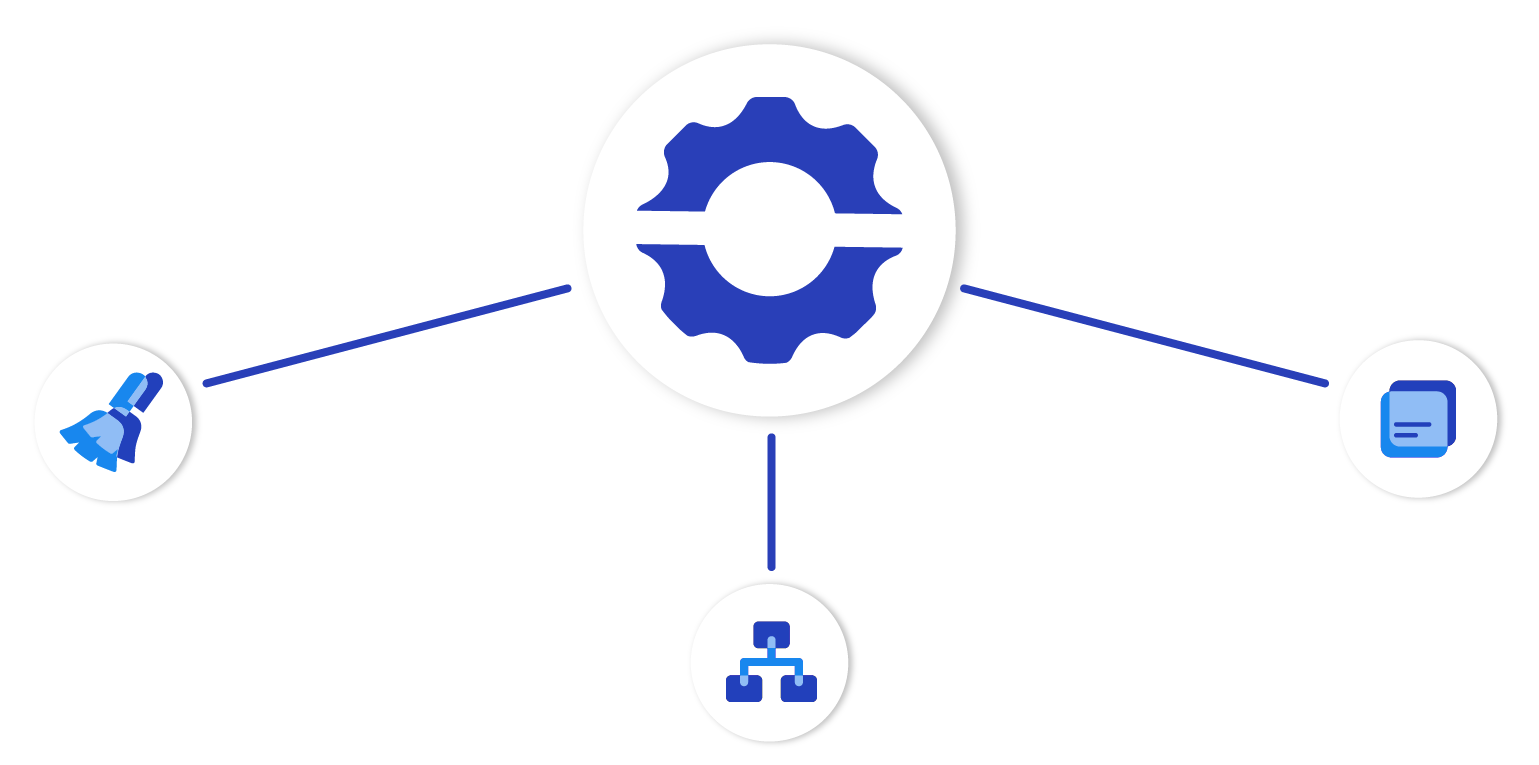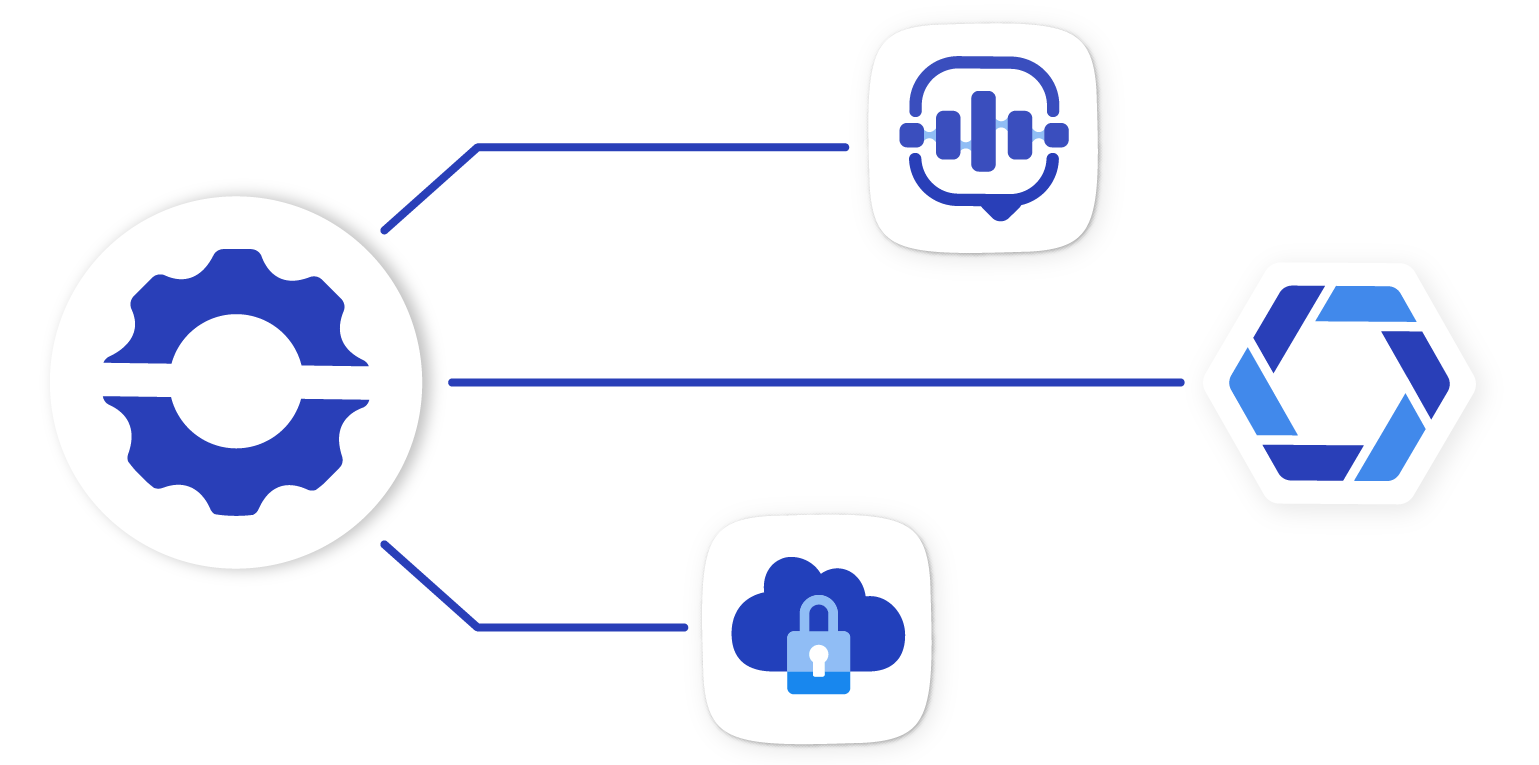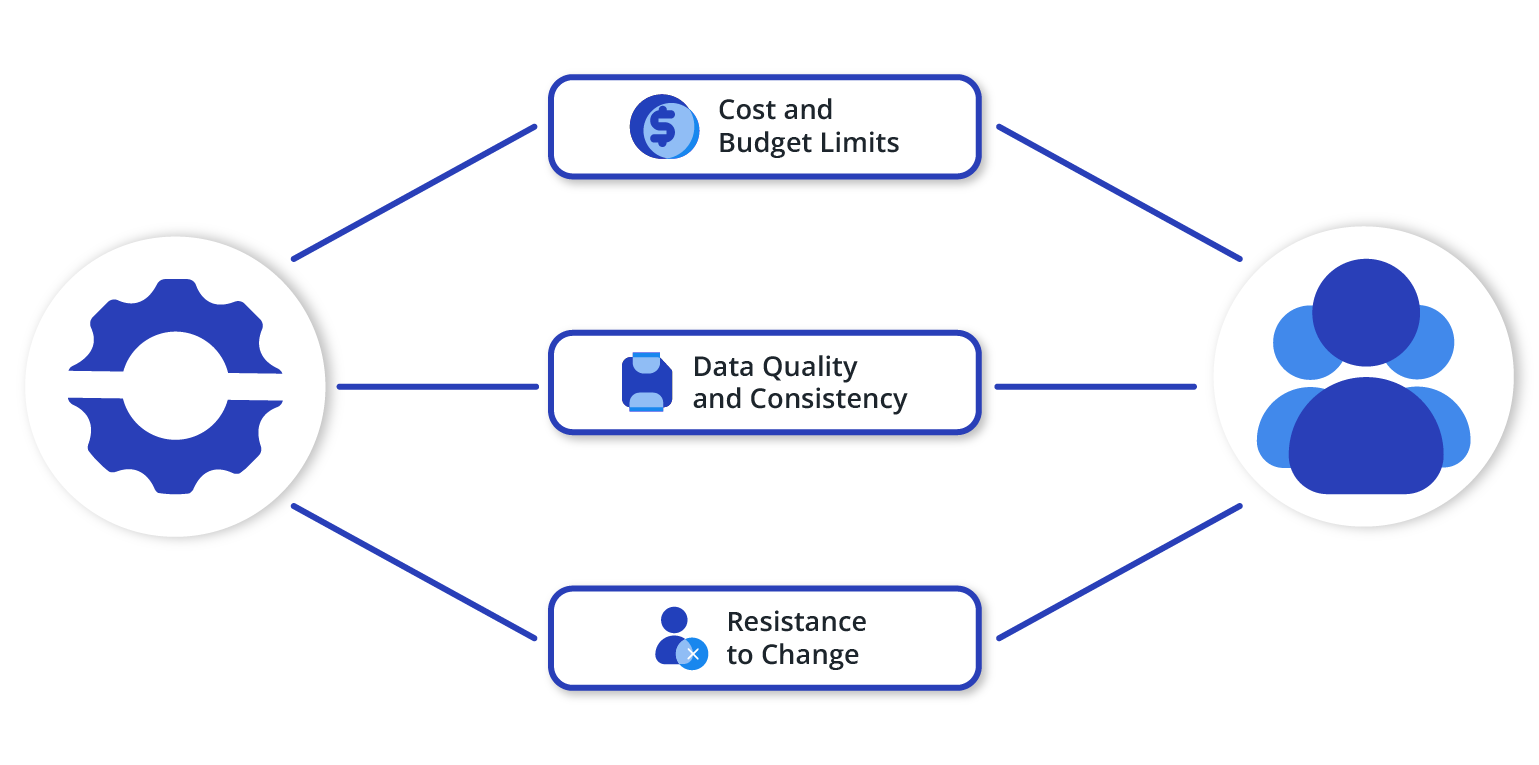Businesses today deal with more data than ever. While this vast amount of data offers great insights and opportunities, it’s also challenging to manage. Imagine facing a massive mountain of data—it’s impressive but overwhelming.
Data automation is the answer. Much like how the assembly line transformed manufacturing, data automation redefines how businesses operate today by streamlining tedious processes and eliminating human error. It turns data from a problem into a tool for unprecedented growth.
For business executives, tech enthusiasts, or startup founders seeking growth, data automation is key. This article will help you understand its power and harness its full potential. Let’s explore the future of data guided by automation.
The What and Why of Data Automation
Data automation refers to the use of technology to streamline data management processes. It encompasses capturing, processing, storing, and analyzing huge amounts of data with minimal human intervention, optimizing efficiency and accuracy.
Significance
Today, data is often heralded as the “new oil” of business. Much like oil, data, in its raw form, might appear murky and of little value. But once refined, it becomes a powerful commodity that drives economic growth and innovation. Data automation is like the modern refinery for this digital oil, ensuring businesses can harness its power to the fullest.
In our digital age, the volume, variety, and speed of data being generated is staggering. From social media interactions and e-commerce transactions to smart devices and organizational databases, every digital touchpoint adds to this enormous pool of data. Processing such huge amounts of data manually is not only inefficient but nearly impossible.
Historical Context
The importance of data is not a new concept. Historically, businesses kept detailed records, albeit manually. Ledgers, registers, and handwritten notes were the precursors to today’s advanced databases. The shift began with the introduction of digital databases and computers in the 20th century, transforming how organizations store and access information.
But the real game-changer was the internet boom. As the digital universe expanded, so did the amount of data generated. The “new oil” analogy for data became prominent in the 21st century as businesses recognized that, just like oil, raw data needed refining to extract its true value. Manual processes became outdated in this data explosion, leading to the birth and rapid adoption of data automation tools.
This shift from manual ledgers to advanced data automation platforms shows how business processes have evolved with technology. As we move forward, data automation will continue to shape the business landscape, ensuring companies can efficiently navigate the ever-growing sea of digital information.
The “Big 3” Benefits of Data Automation
Data automation offers several benefits that can transform how businesses operate. Here are the top 3 reasons why companies globally invest in data automation.
Data Cleaning: Precision at Its Best
At the heart of any meaningful data analysis lies clean, reliable data. Manual data processing is susceptible to errors like duplicates, misentries, or outdated information.
With automation, companies can sift through vast data and quickly identify and fix these errors. This results in trustworthy data that can guide informed decisions without spending hours manually verifying it.
Moreover, regular automated cleaning ensures the data remains relevant and updated, preparing it for accurate future analyses.
Data Migration: Seamless Transitions Every Time
In business, data often needs to move between platforms, whether due to mergers or system changes. Data automation streamlines this process, eliminating many of the challenges associated with manual transfers.
Businesses no longer have to grapple with inconsistencies, data losses, or misalignment between old and new systems. Automation tools carefully map between the source and the destination platforms, ensuring data is correctly formatted, relationships are maintained, and no records are left behind.
Real-Time Reporting: Stay Ahead, Stay Informed
To truly lead, businesses today must be proactive, not just reactive. They should anticipate market changes and customer needs.
Automated real-time reporting helps by immediately showing the latest trends. Instead of waiting for month-end reports or going through manual queries, leaders can see current data and make decisions almost instantaneously. With data automation, companies get instant insights, helping them remain agile, informed, and ahead of competitors.
How Data Automation Works: The Tech Under the Hood
Behind data automation are many impressive technologies. These aren’t just technical terms reserved for tech enthusiasts but critical elements that make data automation so effective. Let’s explore these key components.
RPA: The Silent Worker
Robotic process automation, or RPA, is the unsung hero in data automation. It thrives in environments filled with repetitive tasks. Imagine having an employee who works tirelessly 24/7, never complains, never takes a break, and does tasks meticulously. That’s RPA for you.
From data extraction to integration, RPA works silently in the background, ensuring routine tasks are accomplished without a hitch. In doing so, it not only boosts efficiency but also frees employees to focus on more strategic, value-adding tasks.
AI and ML: The Smart Brains
While RPA handles repetitive tasks, artificial intelligence (AI) and machine learning (ML) are the brains driving data automation. They go beyond mere task execution; they learn, adapt, and predict.
AI allows automation to handle complex scenarios and make decisions based on vast data. ML, its close cousin, excels in patterns. The more data it encounters, the better it gets, refining its algorithms for enhanced accuracy. Together, they make data automation not just faster but also smarter.
Cloud: The Everywhere Storage
In today’s global world, businesses operate beyond borders, and so does their data, thanks to the cloud.
Instead of using bulky physical servers, data is now securely stored online, allowing businesses, big or small, to operate from anywhere and adjust based on needs. Beyond storage, the cloud facilitates real-time collaboration, ensuring teams have timely access to the data they need, regardless of their location.
In data automation, the cloud is the platform that enables seamless global operations.
Facing the Giants: Challenges in Implementation
While the appeal of data automation is undeniable, fully embracing it is not without complexities. It’s like exploring unknown territories; the rewards are abundant, but so are the challenges.
Let’s look at these challenges and discuss ways to overcome them.
Cost and Budget Limits
Implementing data automation solutions often requires a substantial initial financial investment. The costs include buying new tools and platforms, hiring experts, training existing staff, and updating systems. For many businesses, especially smaller ones, these costs can feel intimidating.
However, it’s important to see these expenses as an investment rather than a cost. When implemented correctly, data automation can lead to significant operational efficiencies, reduce costly errors, and free up valuable human resources for more strategic tasks.
The key is to plan carefully, ensuring your chosen solutions fit your company’s future goals and scalability needs.
Data Quality and Consistency
Even the most advanced automation systems are only as good as the data they’re fed. If the data is flawed or inconsistent, the results, no matter how sophisticated the processing, will be skewed. It’s like the age-old saying “garbage in, garbage out.”
Before automation, it’s crucial to have stringent data quality checks. Regular audits and validations can ensure clean and relevant data goes into the automation system. This ensures the output remains reliable and valuable, increasing confidence in the automated processes.
Resistance to Change
Transitioning to automation is as much about technology as it is about people. Employees often view automation with apprehension and skepticism, worried about job security or overwhelmed by learning new technologies. Addressing these concerns head-on is crucial.
Clear and transparent communication can help explain that automation enhances, not replaces, human capabilities. Pair this with proper training programs to ensure every team member is equipped to use the new tools effectively. Celebrate early successes to create a culture that embraces innovation.
With the right mindset, automation becomes a positive shift in both tech and culture.
Case Studies, Trends in Automation Adoption
From budding startups to Fortune 500 giants, data automation has left its mark across sectors. Here are some companies that have used data automation to improve their operations and customer experiences.
Case Study #1: Google
Google, the reigning monarch of search engines, processes billions of searches daily. To provide accurate and relevant results, it uses AI-driven data automation.
Beyond indexing the internet’s vast expanse, Google’s AI continuously learns from user interactions. Each click, query, and feedback contribute to its immense learning database. This allows Google to check the relevance of the content and refine search rankings based on changing user preferences and behaviors, all in real time.
Moreover, Google’s data automation power isn’t limited to just search. Think about the personalized recommendations on YouTube, the tailored ad experiences across their advertising network, or the suggested email responses in Gmail. Each feature, driven by data automation, understands individual user patterns and caters to their unique needs.
Case Study #2: Netflix
With millions of viewers and countless shows, how does Netflix ensure you discover your next favorite series?
The answer is data automation. By automating the analysis of viewing habits, pauses, rewatches, and even skipped episodes, Netflix gives personalized recommendations. And it doesn’t stop at the shows you watch; it goes into details like which genres you prefer, which actors you favor, and even the specific times you’re most likely to watch.
Ever wondered why the thumbnail image of a show changes occasionally? That’s also data automation at work. Netflix tests which images resonate more with certain users to increase the likelihood of them clicking on a title.
Additionally, the platform recognizes patterns that may not be immediately apparent to individual viewers. For instance, if you’ve been watching a string of feel-good movies, Netflix might suggest a series or film in the same emotional vein, even if it’s in a completely different genre.
Netflix uses data automation not only to engage viewers but also to guide its content choices. By understanding what viewers like, Netflix can produce shows and movies more likely to succeed.
Case Study #3: Airbnb
Airbnb has transformed how we travel, largely due to its smart use of data automation. While hosts offer a range of unique properties, determining the right price can be tricky. This is where Airbnb’s data tools step in.
Airbnb’s system considers various factors, from property features to real-time market trends. For example, if an area suddenly becomes popular due to an event, the platform can suggest hosts adjust their prices. Or, if a listing isn’t getting enough views, it might prompt a host to highlight specific features or offer a discount.
Guest reviews play a key role too. By studying feedback, Airbnb offers hosts tips on what guests love and what can be improved. This helps hosts understand what’s effective and what might need a tweak.
Beyond just bookings, Airbnb uses data to recommend personalized travel experiences for users, such as local events or hidden spots.
In short, Airbnb’s data automation helps hosts set competitive prices and offers guests tailored travel suggestions, making the platform more efficient and user-friendly.
Setting Sail: Your Guide to Adopting Data Automation
Venturing into data automation can seem like navigating uncharted waters. However, with a well-structured map and the right compass, it transforms from a daunting expedition to an exhilarating journey. Here’s your guide to embark on this transformative voyage.
Knowing Your Starting Point
Imagine trying to reach a destination without knowing your starting point. It’s challenging, if not impossible. Similarly, before using data automation, it’s crucial to assess your current data systems.
By conducting a thorough audit of your existing data processes, you can identify inefficiencies, redundancies, and bottlenecks. This evaluation not only identifies where automation can be most beneficial but also sets a standard to measure the success and ROI of your automation efforts down the line.
Remember, clearly understanding the “now” paves the path for a better “tomorrow.”
The Power of Knowledge
Training is the bridge between a tool’s potential and its real-world impact. But it’s more than just learning the software or system. It’s understanding the deeper implications of automation.
Why are we adopting this change? How does it fit into our broader business strategy? What value does it bring to each stakeholder? With this knowledge, employees become active participants in the transition rather than mere observers. This leads to faster adoption, fewer issues, and a team ready to make the most of automation for improvement.
A Journey of Constant Improvement
Here’s a truth many tend to overlook: Automation isn’t a one-time setup. If data is dynamic, your automation strategy should be too. The digital landscape continuously evolves, and what works today might be obsolete tomorrow.
It’s vital to regularly review and refine your data automation practices. Stay updated with technological advancements, reevaluate your goals, and align your strategies with your business’s main objectives. By constantly adapting, you’ll keep your automation efforts effective and efficient.
Peering Into the Crystal Ball: Future Trends
What’s next for data automation? Let’s explore some upcoming advancements in this field.
Predictive Capabilities
While current automation processes excel at managing vast amounts of data, the future holds even more promise. Advances in AI and machine learning are paving the way for data automation tools that can not only organize or analyze but also predict.
Imagine the power of foreseeing market shifts, consumer behavior, or even operational challenges before they happen. Using these predictive tools, businesses can decide ahead of time, stay competitive, and adjust their strategies based on anticipated trends. It’s about shifting from a reactive stance to a proactive one, ensuring they are always one step ahead.
Security in the Age of Automation
The more we rely on digital systems, the more we expose ourselves to cyber threats. The future of data automation will be closely linked with improved cybersecurity. As huge amounts of sensitive information get processed and analyzed, safeguarding this data from potential breaches becomes even more critical.
We can expect to see advanced encryption techniques, real-time threat detection algorithms, and multilayered defense mechanisms. It’s not just about preventing unauthorized access but also ensuring data integrity. We might also see data automation combined with blockchain for more secure decentralized data storage.
Harmonious Coexistence: Humans and AI
Science fiction often paints a picture of a future where robots replace human jobs, leaving us obsolete. However, the real future of data automation is about humans and machines working together. Humans offer creativity, intuition, and empathy—qualities difficult for machines to replicate. On the other hand, machines excel at precision, scale, and repetitive tasks.
By combining human creativity with machine efficiency, businesses can achieve unparalleled innovation. Machines handle the mundane tasks, letting humans focus on strategic and creative roles.
Embracing the Inevitable
It’s clear: data automation is no longer an option—it’s a critical imperative. It’s not about hopping on the tech bandwagon; it’s about positioning your business at the forefront of efficiency, accuracy, and innovation.
If you’re considering data automation, Kizen is here to guide you. Reach out to us, and we’ll design a comprehensive strategy for you to achieve success. Let’s transform the “new oil” from just a vision to a concrete advantage, launching your business into a future filled with possibilities.











